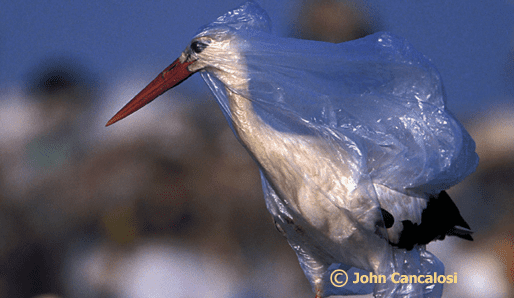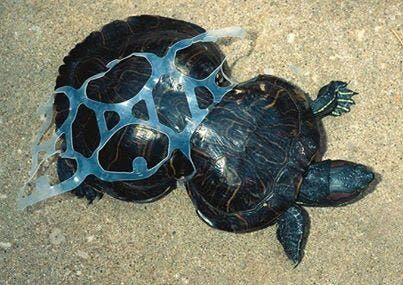Researchers studying the plastic problem our ocean is facing predict that by 2050 nearly every single maritime bird species will have plastic pieces inside their digestive systems. The grim prediction is based on a new study showing that about 90 percent of seabirds today have plastic in their bodies.

In the last few decades, the quantity of plastic ingested by seabirds has increased dramatically. In the 1980s, only about 10% of seabirds were found to have pieces of it in their guts. The increase is due to the incredible amount of plastic clogging up modern bodies of water – as many 360,000 pieces of plastic for every square mile in most of the world’s oceans.
“This really is an issue that concerns every single person, and their daily habits,” biologist Boris Worm of Dalhousie University, who authored an accompanying commentary on the new research, told Discovery News.
Chris Wilcox of CSIRO Oceans and Atmosphere Flagship and Imperial College London and colleagues Erik van Sebille and Britta Denise Hardesty conducted the research.
They surveyed data on 186 species of seabirds, incorporating information on plastic pollution in the birds’ habitats, foraging strategies, body size and more. This was used to create a model predicting debris exposure for the birds.
The researchers next compiled studies of actual plastic ingestion by birds, using reports dated from 1962 to 2012. The statistical model and the other data show that if the same studies were conducted today, “the ingestion rate would reach 90 percent of individuals,” Wilcox and colleagues wrote. Their findings were published in the Proceedings of the National Academy of Sciences.
“We predict plastics ingestion is increasing in seabirds, (and) will reach 99 percent of all species by 2050,” the authors wrote.
The model they used makes the researchers believe that seabirds located around the Tasman Sea, between Australia and New Zealand, are the ones in greatest danger of plastic ingestion. The high concentration of plastic debris in the area, along with a significant bird population – whole species relied on the region for breeding, foraging, and more for centuries now – explain the threat the area poses.
“They mistake them for food when skimming surface waters, searching for visible particles,” Worm said. “Birds ingest a wide variety of plastic items, including disposable lighters, toothbrushes, tampon applicators, light sticks (used in longline fishing) and broken shards of larger plastic debris.”
Worm added that much of the plastic in the ocean flows in from rivers, so the originating sources “could be way inland.”
And the pollutant is hazardous to the birds and other wildlife even when not ingested (leading to poisoning, blockage of the intestines and other nice and magical afflictions). Six-pack plastic holders, for example, have been found wrapped around bird’s necks, around turtle’s shells and other animals, suffocating them or leading to gruesome results.

Image via Discovery
Reducing our reliance on plastics combined with more effective waste management could reduce ocean pollution and the associated health threats to seabirds and other species, according to the scientists. Worm said:
“The biggest single problem is the rapid economic growth and increased use of disposable plastics in many parts of the world, where the waste collection and management (such as safe storage and recycling) system has simply not grown at the same pace. That is, the waste is disposed anywhere, and not stored properly.”


